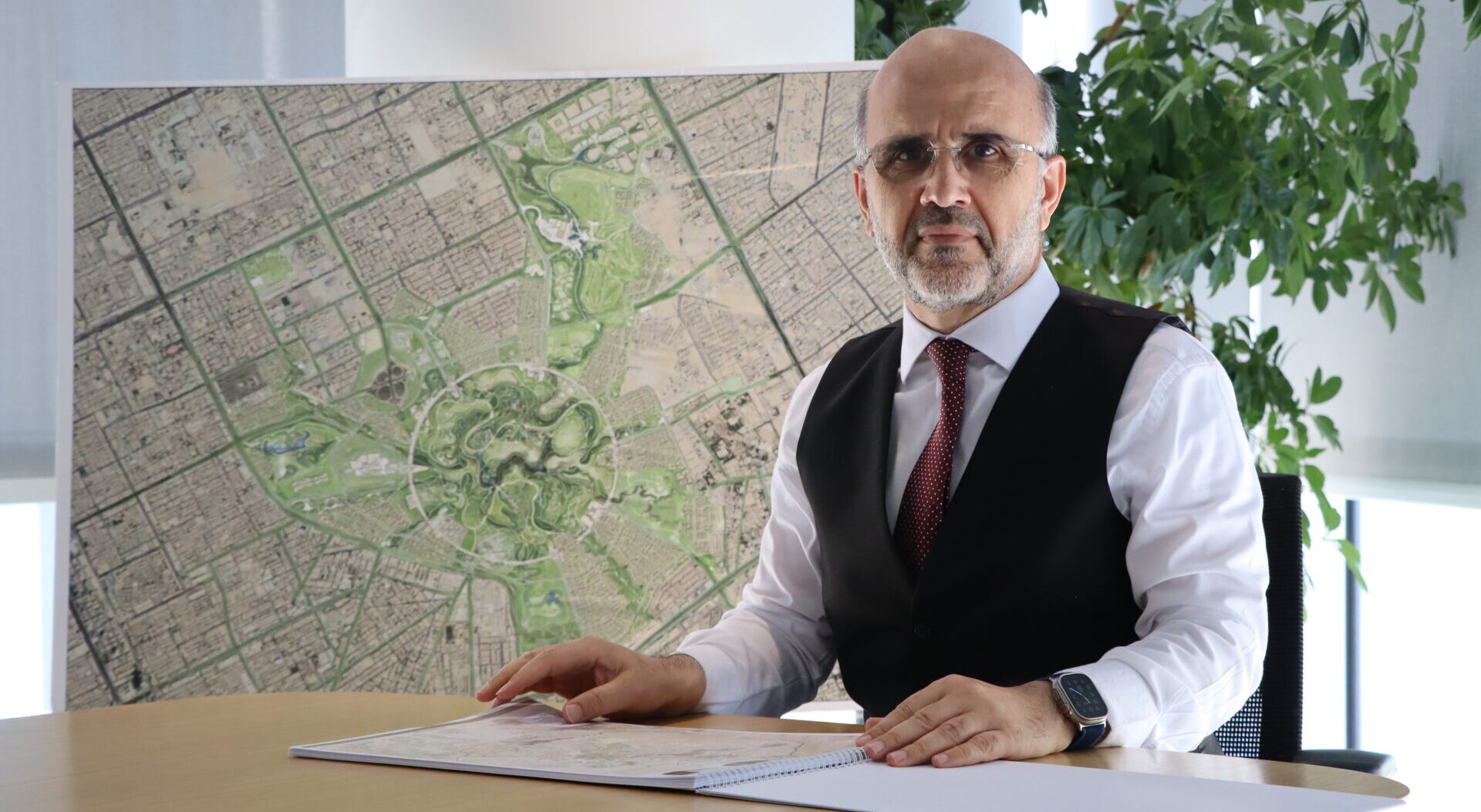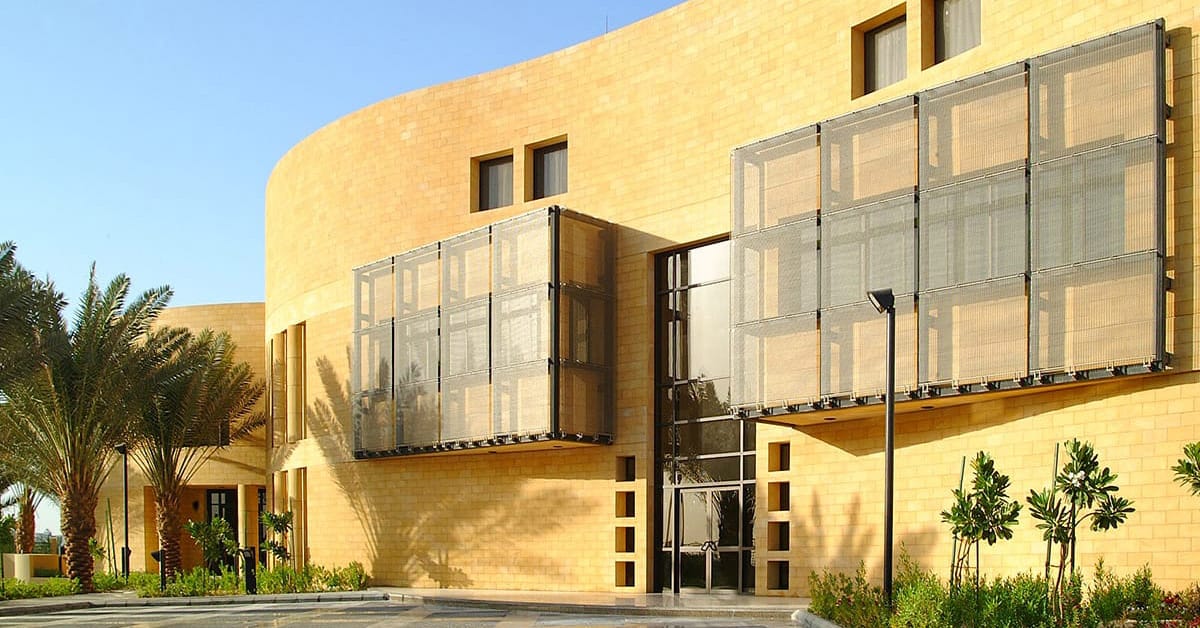 Golden-hued Arriyadh limestone clads the King Salman Kidney Diseases Center, designed by Omrania. When handled with skill, locally quarried stone can be sustainable as well as timelessly beautiful and durable. Photo © Omrania
Golden-hued Arriyadh limestone clads the King Salman Kidney Diseases Center, designed by Omrania. When handled with skill, locally quarried stone can be sustainable as well as timelessly beautiful and durable. Photo © Omrania
Solar panels and green roofs may be the most overt signs of a “green” building, but sustainable architecture begins with selecting sustainable materials.
By Hugh Kidman, Chief Design Architect – October 2017
As Saudi Arabia and other countries in the Middle East and North Africa (MENA) region increasingly embrace sustainable architecture and design, it is worth looking deeper into the many factors that contribute to a building’s embodied energy and carbon footprint. Research and experience in the field has shown us that an integrated, comprehensive approach to sustainable design begins with a careful assessment of materials and methods. Here we focus on the question of sustainable materials, with special consideration for locally grown or produced materials, which require less energy to transport.

Vernacular architecture of the Hejaz or Western Region, Saudi Arabia relies upon the use of locally sourced coral stone, volcanic stone, clay, palm wood, and other materials. Photo © kv naushad
Locally quarried stone has been used for thousands of years, as seen in the vernacular architecture of Saudi Arabia as well as the limestone facades of the modern buildings such as the King Salman Kidney Diseases Center (pictured above) and the King Abdulaziz Library designed by Omrania. Building with local stone can also benefit the local economy and renew traditions of craftsmanship. The thermal mass of stone is particularly well suited to architecture in the MENA region: it is slow to absorb and release heat, mediating the temperature swings from day to night.
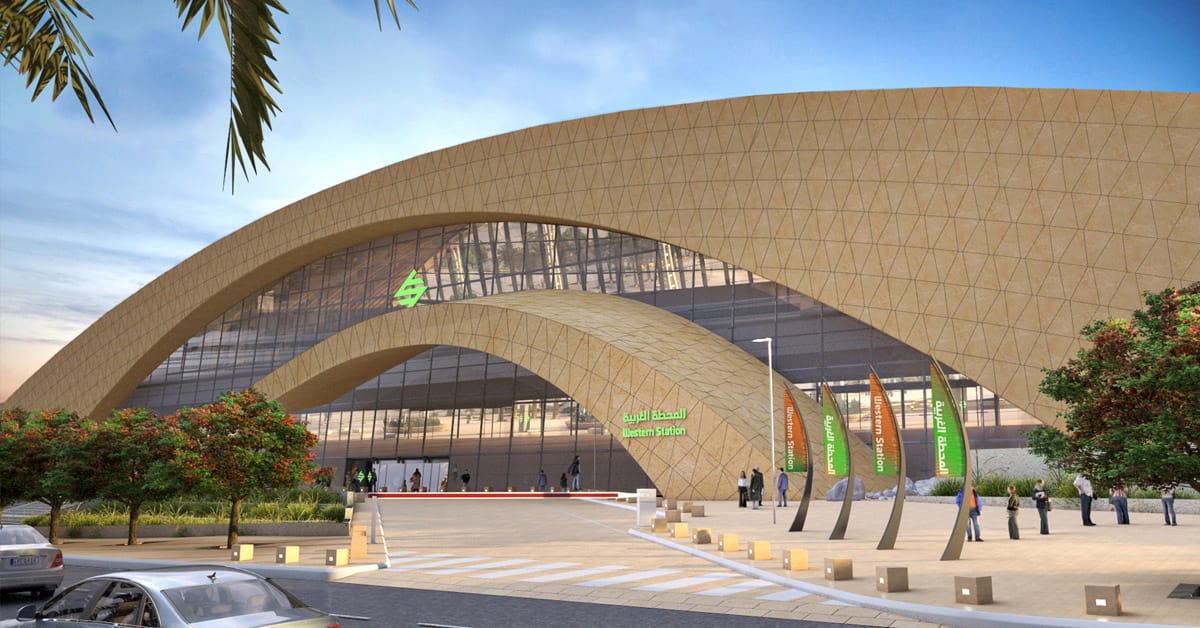
The dune-shaped halls of the Arriyadh Metro Western Station are constructed from reinforced concrete clad in local stone. The station is designed to LEED standards with an expected service life of 100 years. Image © Omrania
That said, the benefits of using local materials must also be weighed against the amount of energy required to produce them. Concrete, for example, may be produced in many regions using locally sourced stone aggregate. However, the concrete industry is one of two primary producers of carbon dioxide, creating up to 5% of worldwide man-made emissions. The sustainability of concrete can be increased by incorporating recycled content into the aggregate. Furthermore, the use of insulated cavity wall construction techniques improves the energy performance of concrete buildings.
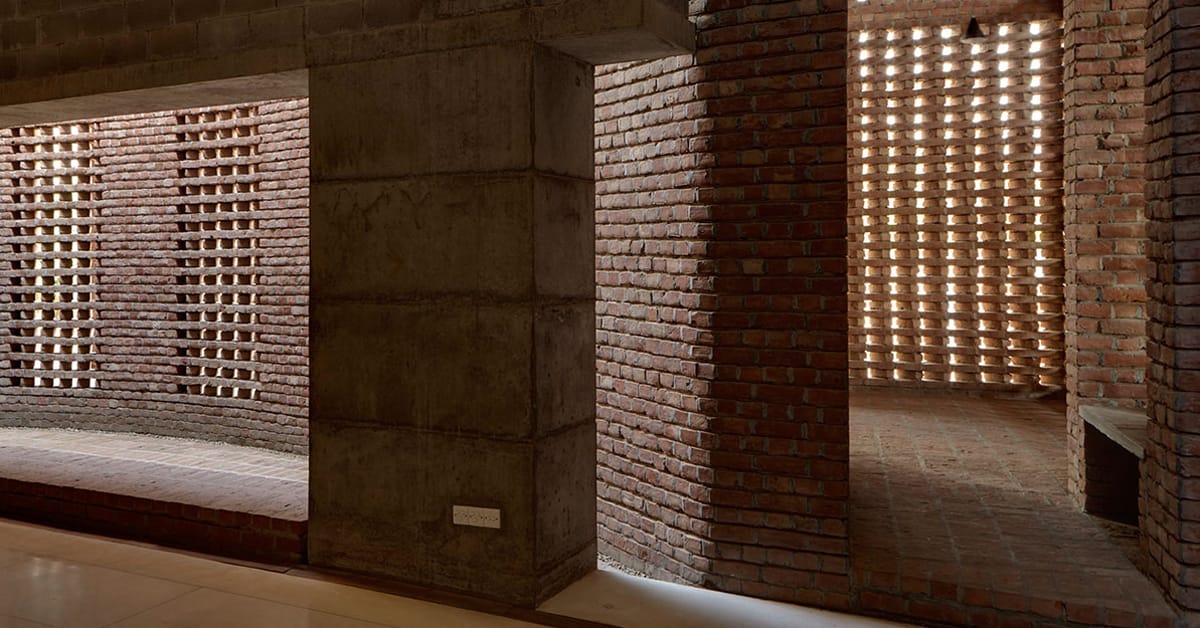
Locally produced brick brings out poetic qualities of light and space in the the Bait Ur Rouf Mosque in Dhaka, Bangladesh, by Marina Tabassum Architects. Photo © Aga Khan Trust for Culture / Rajesh Vora
Traditional brick is made from local materials and often represents a cost-effective choice. But it, too, requires a significant amount of energy to produce in a kiln. A more energy-efficient alternative used in vernacular architecture is mud brick, also known as adobe, which can be made by pouring a mixture of water, earth, and fibrous material into a mold and letting that mold dry in the open air. Well-built adobe walls can provide thermal insulation and create load-bearing structures several stories high. And because these bricks are fabricated from local clays, sands, and soils, they create structures that quite literally reflect the local environment.
An alternative wall construction material appropriate for certain climates and building scales is rammed earth, similar to the technique used at the Aga Khan Award-winning METI Handmade School in Rudrapur, Bangladesh. This ancient building method uses stacked, compacted layers of raw earth mixed with other materials such as clay, gravel, sand, or straw to achieve optimal strength. Rammed earth walls are technically simple to construct, fireproof, thermally massive, and, if reinforced correctly, quite durable. However, unlike air-dried adobe, they are labor-intensive to construct without machinery.
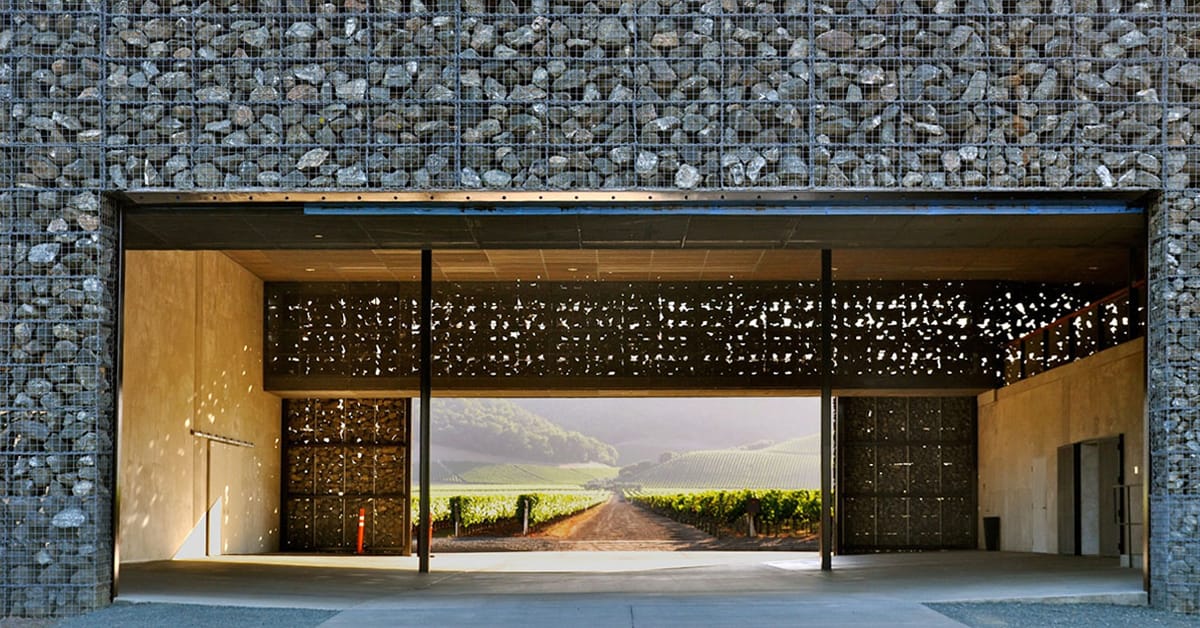
Formed by gathering local basalt rocks into stackable modules, gabion walls at the Dominus agricultural estate in California, designed by Herzog & de Meuron, provide insulation and light filtration.
Gabions enable earth materials to be stacked into stable walls without resorting to the use of water, clay, cement, compression, or heat. Gabions typically comprise box-like cages of steel mesh that are filled with local stones or other massive and locally available substances. The material composition and thickness of the gabion determines its thermal and structural performance. Gabions are ideally suited for free-standing perimeter walls and sound barriers, and are normally used for waterside structures such as quays and embankments.
Another constructive use of earth — more specifically, sand — is the sandbag. People the world over have stacked sand-filled polypropylene bags to create temporary protection from floods and from bullets. More recently though, architects have been using sandbags to develop more permanent shelters, supported by a simple timber frame. In most cases, it’s an affordable and ecologically sound solution. Sandbag structures can perform nearly as well as rammed earth structures, but they are cheaper and require much less energy to produce because there is no need to process the sand and the energy required to produce the bags is negligible.
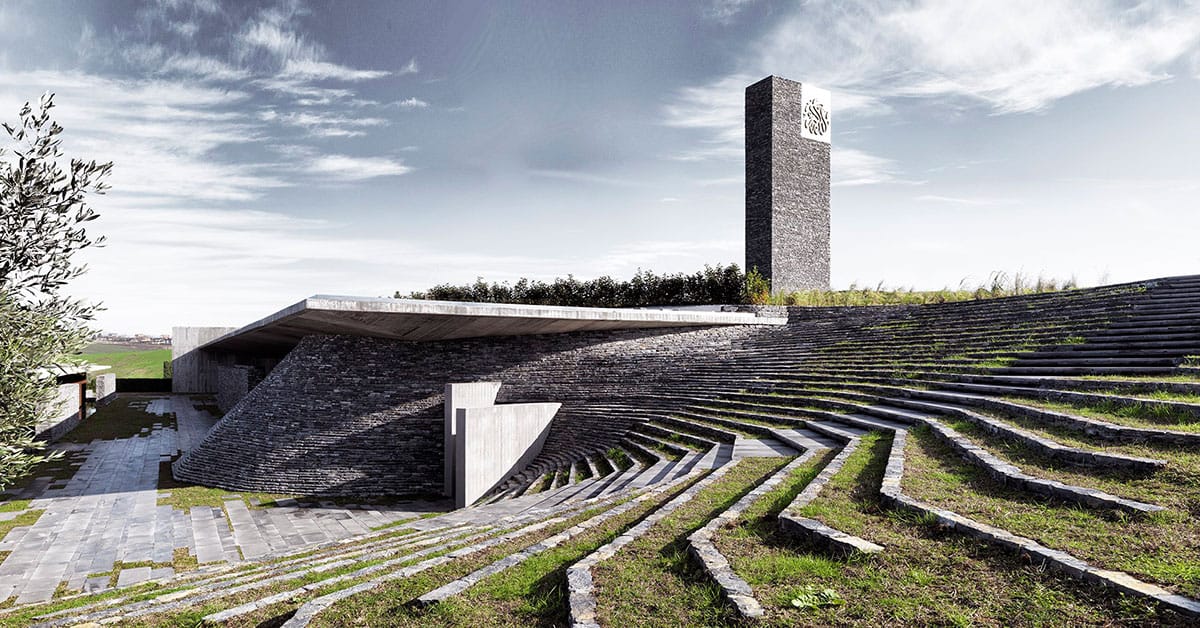
Earth berming techniques allow the Sancaklar Mosque (Emre Arolat Architects, 2012), located on the outskirts of Istanbul, to achieve thermal efficiency as well as visual integration with the landscape. Photo © Thomas Mayer
Some buildings take advantage of the natural thermal properties of earth via berming. Historically, berm structures comprised a timber or stone structure supporting thick layers of sod or peat that are stacked into place. Today’s structures are more likely to include supporting walls with steel or reinforced concrete, but the basic principle is the same. In addition to acting as an external thermal mass that passively reduces heat loss or gain, berms provide natural protection from the elements and have low maintenance requirements.
The contemporary architect’s material palette extends far beyond earth materials, of course. We will continue this discussion in a future post that looks at sustainable uses of glass, ceramics, architectural fabric, and other technical materials.
This post is part of a series on sustainable design and building practices. See also:
June 1, 2017: Sustainable design part 1: resource-effectiveness.






